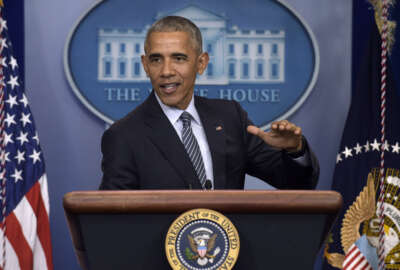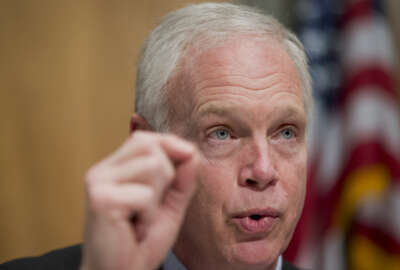
Pay raise: Is it back to the future time?
Why would federal workers boo a president for giving them a 9 percent pay raise, then cheer another one for a 2.1 percent increase? Senior Correspondent Mike Causey...
When looking at the pattern of federal pay raises over the years, it’s amazing what a difference a couple of decades can make. Like so:
On Friday, feds learned that their previously announced January 2017 pay raise of 1.6 percent had been revised upward to 2.1 percent. Huzzah!
American Federation of Government Employees President J. David Cox Sr. applauded the pay upgrade. But he said that the recent pay freeze and small percentage increases since the freeze represent billions of dollars lost to federal workers, or about $91,000 per employee.
There were scattered reports of dancing in the streets of Washington-Baltimore and other major federal centers. For some federal parents, the more generous amount meant their Tiny Tims at home would have a happy holiday after all. After a three-year pay freeze (the first since 1986), followed by a series of 1 percent adjustments, civil servants no longer have great expectations. But it hasn’t always been like this:
At the 1980 AFGE convention in Honolulu, Hawaii, delegates booed when they got the word, by long-distance telephone call, that the White House had OK’d a 9.1 percent raise for civilian federal workers, and 9.25 percent for the uniformed military. The federal groups gave President Jimmy Carter the thumbs down — plus some other gestures — because leaders said a minimum 13 percent raise was justified. At the time, inflation was running in the double-digits. A mere 9.1 percent pay hike was considered chump change. Almost an insult.
In 1972, the presidents of AFGE and the National Association of Letter Carriers, another powerful AFL-CIO affiliate, let it leak that they were supporting President Richard Nixon’s reelection bid as “private citizens” and not as union presidents. In return, the White House agreed to improvements for blue-collar (wage board) feds, plus a 10.9 percent raise for all federal employees.
The bipartisan federal employee pay comparability act (FEPCA) was signed by a Republican president, George H.W. Bush, with the strong backing of most House and Senate Democrats and many Republicans. It was designed to give white-collar feds a series of catch-up raises over the next 12 or 13 years to close the pay gap — as measured by the government — between feds and their private sector counterparts in different locality wage areas, like Washington-Baltimore, Houston, Los Angeles and San Francisco-San Jose, New York City, Philadelphia, etc. The baby-step raises were to begin with the next president. That turned out to be Bill Clinton. When presented with the first proposed FEPCA pay raise, Clinton and his advisers were stunned by what they considered to be very high pay levels in government. Instead of proposing the pay raise based on the FEPCA formula, he proposed a zero increase. Congress overrode him, but feds didn’t — and haven’t since — get the annual raises promised in the law that was supposed to close the gap.
So not much has changed since the White House and Congress promised feds a series of modest annual raises to close the pay gap. Political and fiscal considerations still rule. Enjoy your 2.1 percent raise! It could have been, and was until the Friday announcement, worse!
Nearly Useless Factoid
The 1985 movie Back to the Future was banned in China because of its time travel and “disrespectful portrayal of history.”
Source: Mental Floss
Copyright © 2025 Federal News Network. All rights reserved. This website is not intended for users located within the European Economic Area.
Mike Causey is senior correspondent for Federal News Network and writes his daily Federal Report column on federal employees’ pay, benefits and retirement.
Follow @mcauseyWFED





